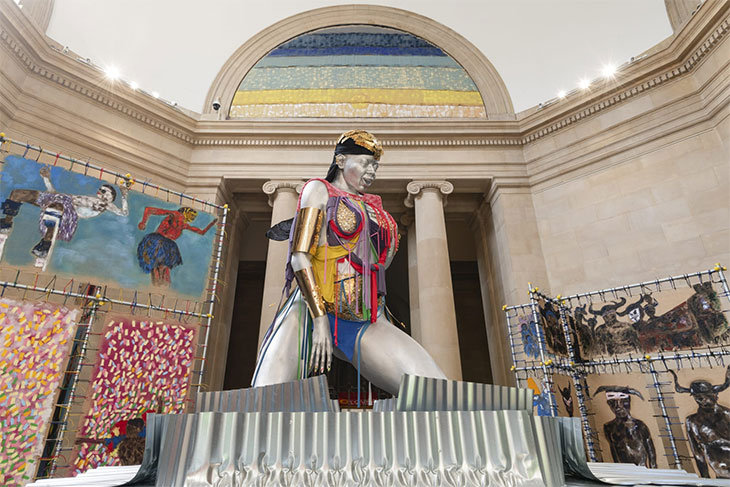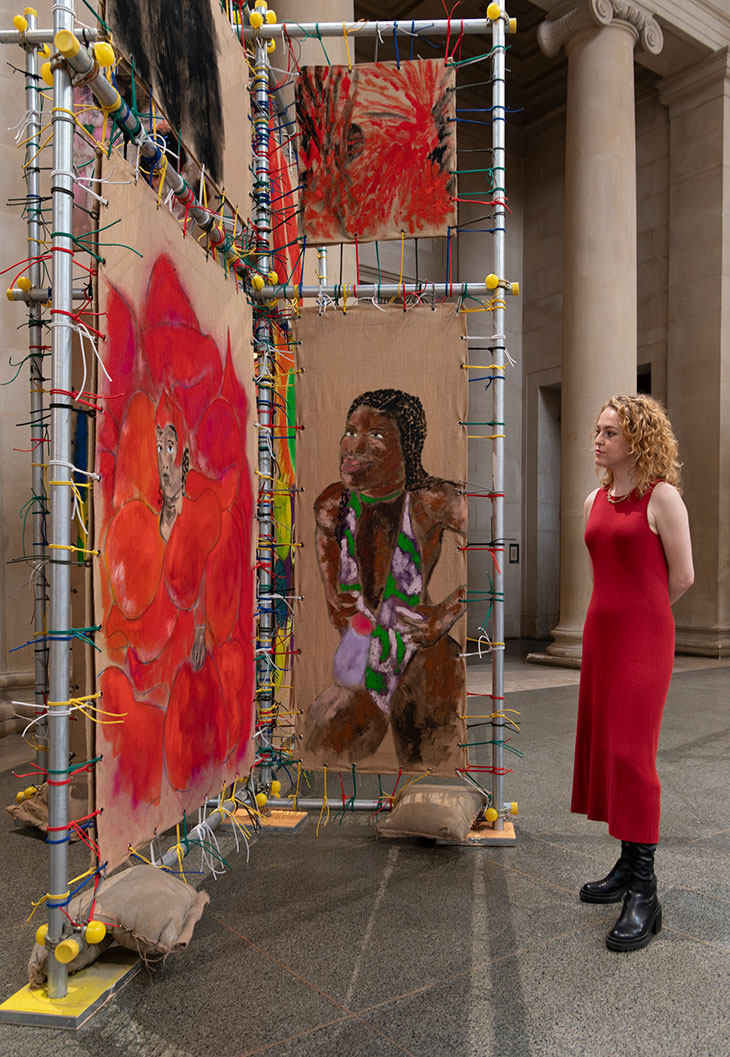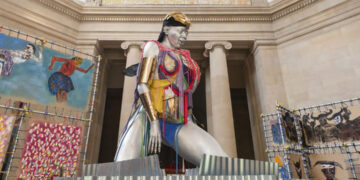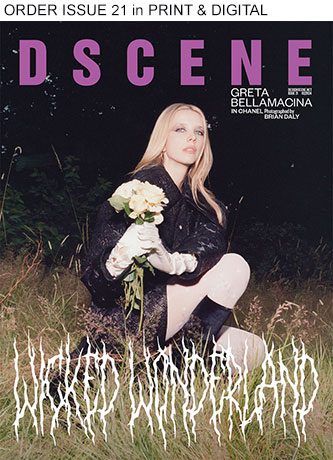
Alvaro Barrington‘s “GRACE,” a monumental new commission at Tate Britain, transforms the Duveen Galleries with a dynamic fusion of sound, painting, and sculpture. This immersive installation invites visitors into a deeply personal narrative, highlighting the transformative influence of women within Black culture on Barrington’s life and artistry. The work honors three central figures: his grandmother Frederica, his close friend and sister-figure Samantha, and his mother Emelda. Presented in three acts, “GRACE” intertwines Barrington’s Caribbean carnival heritage with poignant memories from his childhood in Grenada and his adolescence in New York.
ART
Upon entering the Duveen Galleries, visitors encounter a suspended corrugated steel roof, simulating the experience of seeking refuge from a tropical rainstorm. This evocative piece recalls Barrington’s childhood in Grenada, where the sound of rain on a metal roof meant sanctuary. Accompanied by a curated soundscape featuring NTS radio programs chosen by Femi Adeyemi, and new compositions by Kelman Duran, Andrew Hale, Devonte Hynes, and Olukemi Lijadu, the auditory experience is enhanced with the resonant tunes of the Mangrove Steelband. Beneath the roof, rattan and plastic seats embellished with braided elements and adorned with plastic quilts—featuring embroidered postcards and artworks by Teresa Farrell—invite visitors to share in a moment of collective shelter and nostalgia.

As visitors move beyond this protective enclave, they are greeted by a towering four-meter aluminum sculpture of a dancing figure, inspired by and created with Barrington’s friend Samantha. Positioned atop a large communal steel drum, this figure is lavishly adorned with ‘Pretty Mas’ jewelry by L’ENCHANTEUR, a costume by Jawara Alleyne, and nails by Mica Hendricks. Surrounding this central figure are vibrant paintings of ‘traditional Mas’ characters and carnival revelers, set against archway canvases depicting a journey from sunrise to sunset. This vivid tableau invokes the spirit of ‘J’ouvert,’ a Caribbean tradition where revelers cover each other in paint, mud, and oil, dancing at dawn to celebrate and reclaim their space in the streets.
The final act of “GRACE” takes place in the North Duveen Gallery, where light pours through a stained-glass window, illuminating a boarded-up kiosk resembling an American prison cell. This contemplative scene is further enclosed by crowd control barriers topped with barbed wire, evoking the harsh realities of mass incarceration. Church pews draped with plastic quilts featuring drawings by Barrington face this sobering installation, creating a space for reflection on the relentless fears and unwavering love of Black mothers for their children amidst systemic violence. This concluding segment, drawing from Barrington’s teenage years in New York, speaks to the enduring strength and resilience within Black communities.

“GRACE” is a powerful homage to the women who shaped Barrington’s life, offering visitors a profound exploration of protection, celebration, and the enduring vitality of Black cultural heritage. Through this compelling narrative, Barrington invites us to reflect on our own histories and the communities that sustain us.
Tate Britain Commission: Alvaro Barrington: GRACE
29 May 2024 – 26 January 2025
Tate Britain, Millbank, London, SW1P 4RG
Open daily 10.00–18.00



















